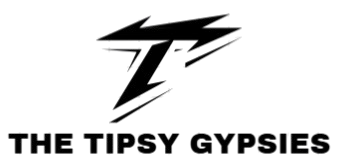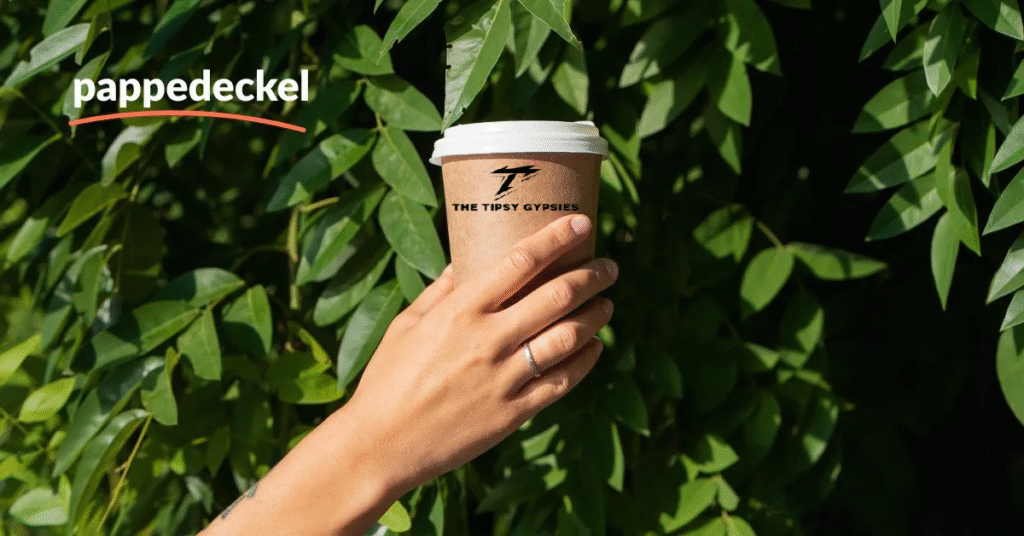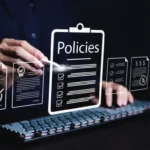A Pappedeckel is a cardboard lid or cover, usually flat and round, designed to seal cups, jars, or food containers. In English, it can mean a cardboard lid, paperboard cover, or beer coaster, depending on its use. The term Pappedeckel combines two German words: Pappe, which means strong cardboard, and Deckel, which refers to a lid or cover. This simple yet descriptive name perfectly explains its purpose. While it looks simple, the Pappedeckel has developed into more than just packaging. Over time, the Pappedeckel has grown beyond its role as basic packaging. Today, it is valued as part of cultural tradition, a creative space for brand promotion, and a clear example of environmentally responsible design. Today, it is widely used in food service, product packaging, and even creative craft projects.
Linguistic and Cultural Roots
The term Pappedeckel clearly shows its material and purpose. In the German language, Pappe describes firm paperboard made by pressing layers of pulp together, while Deckel is the word for any covering or closure. Together, they define a product that is both functional and adaptable. Combined, it directly describes the product.
Historically, the word has been part of daily life in Germany for more than a century. In the early 1900s, cardboard lids were common in dairies, cafés, and homes. They were inexpensive, biodegradable, and easy to make, making them perfect for sealing milk bottles, coffee cups, and jam jars before plastic became popular.
For many people in Germany, the word Pappedeckel stirs memories of earlier decades when packaging was simpler, more personal, and closely tied to daily routines. It reminds people of a time when packaging was simple, practical, and closely connected to everyday life.
Early History and Evolution
Before the Plastic Era
Before plastic packaging existed, Pappedeckel lids were a basic part of food preservation. Thin cardboard discs were used to seal milk bottles, cover hot drinks, and protect homemade preserves. Many households reused leftover cardboard to make quick covers for pots or jars. This showed how versatile these lids were in daily life.
Industrial Growth
By the mid-20th century, advances in paperboard production allowed faster and larger-scale manufacturing. Printing technology improved as well, letting businesses add colorful logos, artwork, and later QR codes to lids. What had once been only functional became an advertising space.
Coffee shops, milkshake stands, and yogurt brands started using custom-printed Pappedeckel to stand out. By the late 20th century, they had become a common part of food service and retail packaging.
Functional Benefits
Pappedeckel stays popular because it is practical, affordable, and eco-friendly.
It is lightweight but still strong enough to protect food and drinks. It resists moisture to a certain degree, helps keep drinks warm, and reduces spills. Since it is made from paperboard, it is biodegradable and recyclable, offering a better choice than single-use plastic lids.
For businesses, it is cost-effective and provides a small but powerful space for branding.
Types of Pappedeckel
Beverage Lids
The most common type, used in cafés and beverage stands. These help keep drinks warm, prevent spills, and carry printed logos or seasonal designs.
Food Packaging Discs
Used for yogurt, ice cream, soups, and ready-to-eat meals. They keep the contents fresh and often display nutritional information or brand graphics.
Promotional and Collectible Lids
Special editions created for events, festivals, or marketing campaigns. In Europe, this is especially common with beer coasters that double as souvenirs.
Biodegradable and Compostable Lids
Made from recycled paper or plant-based fibers. These break down naturally, making them perfect for sustainable packaging.
Pappedeckel in Different Cultures
Germany
Part of everyday packaging, especially in cafés, dairies, and breweries. Bierdeckel (beer coasters) are closely related, often used for branding or even as a place to jot down quick notes in pubs.
Europe
At local markets and fairs, cardboard lids cover drinks and small food containers. Vendors use them both for practical purposes and for advertising.
Asia
Paper-based lids and decorations appear during festivals, often symbolizing good fortune. Designs are usually bright and artistic.
Africa
In some areas, cardboard covers and coasters are part of community gatherings and cultural events, representing unity and celebration.
Modern Innovations
The push for eco-friendly packaging has brought new developments in Pappedeckel design.
Water-resistant coatings now make it possible to use lids with soups and moist foods without them bending. Many coatings are plant-based, avoiding harmful microplastics.
Interactive packaging is on the rise, with printed QR codes linking to discounts, videos, or games.
Smart lids are being developed to track freshness, show temperature changes, and even connect with supply chain systems.
Environmental Impact
Replacing plastic lids with Pappedeckel helps reduce single-use plastic waste. Paperboard breaks down naturally and can be recycled multiple times before the fibers lose quality.
For best results, customers should dispose of them properly. Many companies now print clear recycling instructions on the lids. Germany’s strong recycling habits and the “Blaue Tonne” (blue bin) system help keep recycling rates high.
Business Advantages
For brands, the Pappedeckel is more than just packaging. It is affordable advertising that customers see every time they take a sip or open a container.
It can boost a company’s image as eco-friendly, which appeals to today’s environmentally aware shoppers. Special edition designs also encourage customers to share pictures on social media.
How to Make Your Own Pappedeckel
Making a Pappedeckel yourself is simple and creative.
Cut sturdy cardboard into your desired shape and size. Decorate it with bright colors, patterns, or your logo. If you want it to last longer, apply a thin layer of water-based sealant.
Homemade Pappedeckel can be used for crafts, small businesses, or special events. Making your own Pappedeckel is also a rewarding way to recycle materials. With just a little creativity, you can turn unused cardboard into something functional and unique.
Safety and Durability Considerations
Pappedeckel is generally safe to use, but it is not as durable as plastic when exposed to high heat or very wet conditions. New plant-based coatings help improve performance. For food use, always make sure materials are certified safe and free of harmful chemicals.
The Future of Pappedeckel
The future is promising thanks to plastic reduction laws and growing demand for sustainable packaging. Expect to see smarter designs, better compostable coatings, and even stronger links to digital marketing.
As the demand for environmentally friendly packaging grows, the Pappedeckel is set to remain a key part of the industry’s future. Its combination of practicality, reusability, and eco-conscious appeal ensures it will continue to be a smart choice for modern packaging solutions.
Conclusion
A Pappedeckel may seem like a small detail, but it has a rich history and important role in modern packaging. From sealing milk bottles in the early 1900s to becoming a marketing and sustainability tool today, it shows how even the simplest products can adapt and stay relevant.
Its versatility, eco-friendly nature, and marketing potential make it a top choice for both businesses and consumers. In the shift toward responsible packaging, the Pappedeckel proves that simple solutions can make a big difference.
Frequently Asked Questions ( FAQs )
What is a Pappedeckel?
A Pappedeckel is a flat cardboard lid or coaster used to seal cups, jars, or food containers. It protects beverages and food from spills, contamination, and heat loss, and is often used in cafés, dairies, breweries, and food packaging industries.
What is the meaning of the word Pappedeckel?
The word Pappedeckel comes from the German Pappe (cardboard) and Deckel (lid). It refers to a circular or flat paperboard cover used for drinks, dairy products, frozen desserts, and other packaged foods, combining functionality with branding potential.
Can Pappedeckel be recycled?
Yes, most Pappedeckel can be recycled if they are made from uncoated paperboard. For effective recycling, they should be placed in paper collection bins and kept free of heavy food residues, oils, or plastic layers that can interfere with the recycling process.
What are Pappedeckel used for?
Pappedeckel are used to cover hot and cold drinks, seal dairy items like yogurt or milk bottles, protect ice cream tubs, and prevent spills. They are also widely used as beer coasters, promotional marketing tools, and collectible items during special events.
Why is Pappedeckel considered eco-friendly?
Pappedeckel is considered eco-friendly because it is made from biodegradable and recyclable paperboard. When produced from sustainably sourced materials, it supports renewable packaging cycles, reduces plastic waste, and lowers environmental impact.






